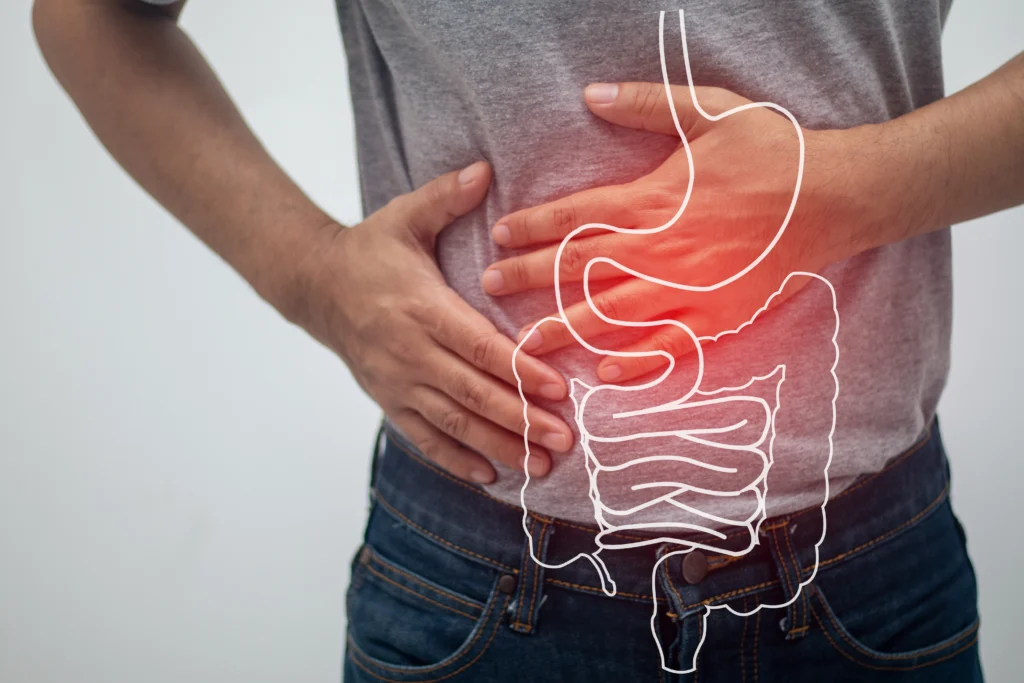Discover how constipation is the hidden cause of chronic belly bloating and how a targeted diet, fiber strategy, and gentle laxatives helped Dina find lasting relief.
Understanding Chronic Belly Bloating
Chronic belly bloating is a common digestive complaint, leaving many adults feeling uncomfortable, gassy, and frustrated. While people often blame certain foods, the underlying cause is frequently constipation and poor bowel habits.
Belly Bloat: The Common Culprit
Dina, a 45-year-old business owner, came to me as a “last resort” for her persistent bloating. It had been ongoing for four years, and she felt she had tried everything—so much so that she was skeptical that any dietary approach could help. Her best friend, however, encouraged her to give my method a try, and she reluctantly agreed.
Dina’s bloating began after a stomach virus, leaving her bloated and constipated. She was averaging only one bowel movement every three days with minimal relief. Her GI doctor suggested 25 grams of fiber per day, but despite eating prunes, split pea soup, and high-fiber cereals, she experienced excessive gas and worsening bloating. Laxatives—over-the-counter and prescription—caused uncomfortable cramping or alternating diarrhea and constipation. Even a low FODMAP diet, which limits fermentable sugars in foods like beans, high-fructose fruits, wheat, onions, and cruciferous vegetables, failed to help.
After reviewing Dina’s diet and daily habits, it became clear why nothing had worked. Her typical day included yogurt and coffee for breakfast, a tuna or cheese sandwich on rye for lunch, and a protein, salad, and starch for dinner. Fiber intake was minimal until dinner, and when she had tried a high-fiber diet, she had chosen the highest FODMAP sources, which triggered gas and bloating. She had also never combined fiber intake with laxative support.
Dina’s bloating was a direct result of her constipation backlog. To address it, I recommended:
- A larger breakfast to stimulate the gastro-colic reflex
- High-fiber, low-FODMAP meals evenly spaced throughout the day (target: 25 g of fiber)
- Eight cups of water daily, preferably between meals
- Gentle osmotic laxatives (Miralax and magnesium) in combination with fiber
Sample Meal Plan:
Breakfast:
- Eggs, low-FODMAP fruit, and oat bran hot cereal OR
- Whole spelt sourdough with farmer cheese and a berry-ground-flax smoothie
Lunch:
- Whole spelt sourdough with cheese/tuna/almond butter and a veggie like carrots, tomatoes, or celery
Snack:
- Yogurt with ground flaxseed and blueberries OR
- Celery with peanut butter OR
- Oat bran whole spelt muffin
Dinner:
- Veggie soup or cooked veggies + a salad, protein, and starch such as quinoa, roasted butternut squash, sweet potato, or potato with skin
Within 10 days, Dina’s larger breakfast and coffee were helping stimulate her bowels, and after one month, her constipation was completely resolved. Once bowel movements were regular, her bloating disappeared. Over the next few months, we gradually weaned her off laxatives and reintroduced higher-FODMAP foods, with continued fiber support. By her third and final visit, Dina reported that her bloating was gone entirely.
Key Takeaways:
- Constipation is the most common cause of chronic bloating and can be easily overlooked.
- The type of fiber and meal timing matter—high-FODMAP fiber can worsen bloating if not introduced carefully.
- A multi-layered approach combining fiber, low-FODMAP foods, hydration, and gentle laxatives often works when other methods fail.
- Educating patients on bowel habits and fiber strategies is crucial for long-term digestive relief.
Dina’s success story highlights that chronic belly bloating can often be solved by addressing constipation first. Combining a low-FODMAP, high-fiber diet with proper hydration and short-term gentle laxatives can provide lasting digestive relief and improve overall gut health.



